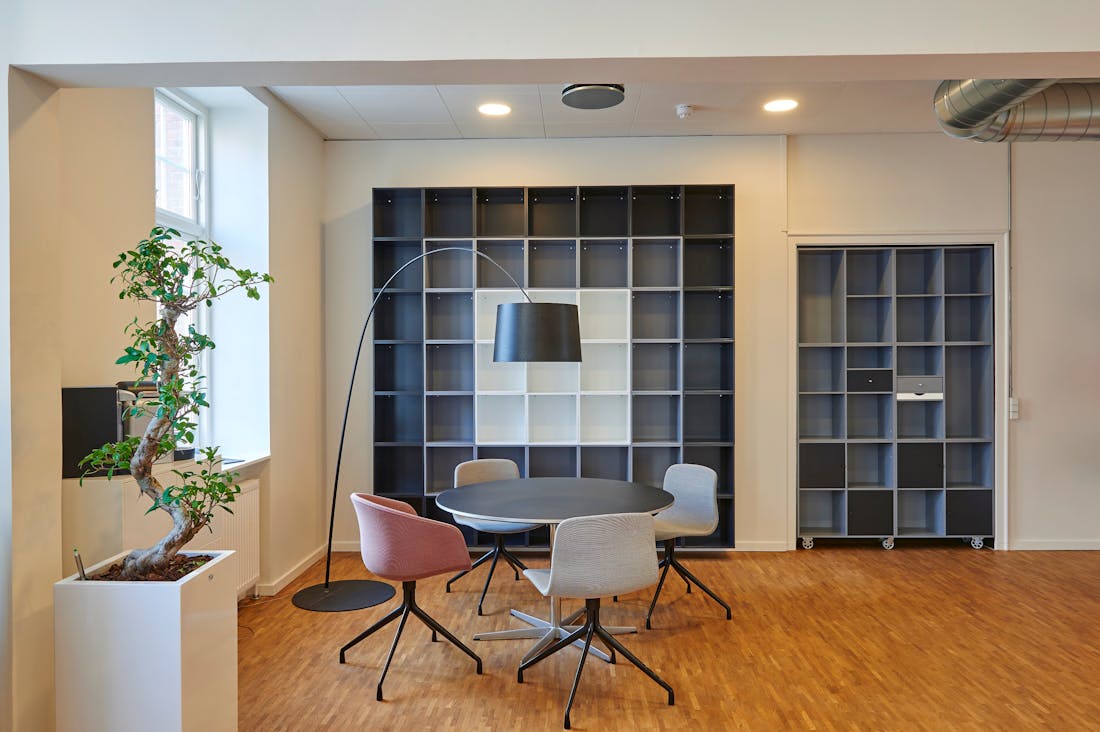As remote work becomes increasingly popular, professionals are discovering the many benefits of a flexible workspace. However, creating a productive home office environment requires thoughtful planning and organization. This guide aims to explore essential strategies, tools, and tips for transforming your home into a focused and inspiring workspace that maximizes efficiency and well-being.

Designing a Functional Workspace
Designing a functional workspace involves creating an environment that optimally supports productivity, collaboration, and employee well-being. Key elements include ergonomic furniture, which promotes comfort and reduces strain, and a layout that encourages movement and interaction among team members. Adequate natural light and diverse lighting options can enhance mood and focus, while incorporating greenery improves air quality and reduces stress. Technology should seamlessly integrate into the workspace, enabling efficient communication and workflow. Additionally, dedicated quiet spaces and collaborative zones cater to various work styles and needs. Thoughtfully designed break areas encourage relaxation, fostering creativity and innovation amidst a balanced work-life dynamic.

Creating a Distraction-Free Environment
Creating a distraction-free environment is essential for enhancing focus and productivity, whether at home, in the office, or during study sessions. Begin by decluttering your space; remove unnecessary items that can divert your attention. Organize your workspace with only the tools and materials needed for the task at hand. Utilize soft lighting and comfortable seating to promote a calming atmosphere. Consider using noise-canceling headphones or ambient music to mask distracting sounds, and establish clear boundaries with others to minimize interruptions. Additionally, implementing focused time blocks, utilizing techniques like the Pomodoro Technique, can help you maintain concentration and efficiency throughout your work or study periods.

Maintaining Work-Life Balance
Maintaining work-life balance is essential for overall well-being and productivity. In today's fast-paced world, where professional demands often encroach upon personal time, setting clear boundaries between work and home life is crucial. Individuals should prioritize time management, making deliberate choices about how to allocate their hours. Regular breaks, vacations, and downtime are necessary to recharge both mentally and physically. Incorporating activities that bring joy, such as hobbies or spending time with loved ones, can significantly enhance life satisfaction. Additionally, open communication with employers about workload and expectations can foster a healthier work environment, ultimately leading to increased engagement and job satisfaction.
Incorporating Technology for Enhanced Productivity
Integrating the right technology into your home office can dramatically boost productivity and streamline processes. Utilize project management tools to organize tasks, set deadlines, and monitor progress. Communication platforms like Slack or Microsoft Teams facilitate seamless collaboration, especially for remote interactions. Moreover, consider automation tools that can handle repetitive tasks, freeing up your time for more critical activities. High-speed internet is essential to support video conferencing and cloud storage, ensuring that you stay connected and efficient. Investing in quality hardware, such as a reliable computer and peripherals, will enhance your overall work experience.
Establishing a Daily Routine for Consistency
Creating a structured daily routine is a powerful strategy for maintaining productivity and focus while working from home. Start by setting consistent work hours that mimic a traditional office schedule. This not only helps separate work from personal life but also fosters a sense of normalcy. Incorporate regular breaks to recharge, using techniques such as the 52/17 method, where you work for 52 minutes and then take a 17-minute break. Additionally, begin each day by reviewing your goals and tasks, prioritizing them based on urgency and importance. This proactive approach allows you to tackle your most significant challenges first, setting a positive tone for the day.
Creating a Supportive Community for Remote Work
Building a supportive community while working remotely can significantly enhance your experience and well-being. Engage with colleagues through virtual coffee breaks or team-building activities that foster connection and camaraderie. Consider joining online forums or professional groups relevant to your industry, where you can share insights and seek advice. Networking not only helps in professional development but can also provide emotional support during challenging times. Additionally, participating in local meetups or workshops can expand your professional circle, offering new perspectives and opportunities that enrich your career journey.
The Importance of Ergonomics in Your Workspace
Investing in ergonomics is essential for maintaining health and productivity in your home office. Start with an adjustable chair that supports your lower back, and ensure your desk height allows for your elbows to be at a 90-degree angle while typing. Monitor placement should be at eye level to avoid neck strain. Footrests and wrist supports can further enhance comfort and reduce fatigue during long work hours. Additionally, incorporating movement into your day, such as standing or stretching breaks, can alleviate tension and improve circulation, contributing to overall well-being. Prioritizing ergonomic design not only aids in physical health but also promotes sustained focus.
Incorporating Mindfulness Practices into Your Day
Mindfulness practices can significantly improve focus and reduce stress while working from home. Begin by dedicating a few minutes each day to mindfulness meditation, which can help clear your mind and enhance your ability to concentrate. Techniques such as deep breathing exercises can also be beneficial, allowing you to reset during high-pressure moments. Consider incorporating mindful breaks, where you step away from your workspace to engage in activities like stretching, walking, or simply enjoying a cup of tea. These practices not only promote mental clarity but also encourage a more balanced approach to work, enhancing overall productivity and job satisfaction.